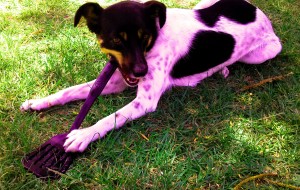I make no apologies for the following confession – I am a crier.
Not a sniffler, or a quick tear up, run down and wipe away. But when I’m stressed, frustrated, elated or over joyed, my one and only emotional output is tears…and lots of them.
It makes absolutely no sense, but it appears to be the only arsenal I have in my emotional toolkit, whether I’m happy or sad… let me explain.
Depending on what article you read, or Google, as humans we experience 4 distinct emotions – happy, sad, afraid/surprised, angry/disgusted. That’s it.
Everything else we feel is biologically driven from these basic four. And depending on the list you consult, that can be up to 40+ different feelings.
Our brain is an amazing machine that filters all environmental cues and combines it with our conscious experience, influenced on any given moment by our mood, our hormones, our personality and motivation, to deliver the experience of emotion.
It’s a pretty complex range of inputs that are synthesised into a handful of outputs. Effortlessly and seamlessly.
We’ve all experienced it, the feeling, the inkling…the partner that doesn’t seem quite right today, the unusual quietness of the usually chatty barista, the smile from the parking ranger as s/he walks away from sliding another ticket under the windscreen.
And on the flip side, the palpable excitement as your birthday rolls around as you imagine you’ll awake to breakfast in bed, a stack of gifts and the incessant trill of your phone (proof that you are loved). Or the nervous tension as you lay in bed, waiting for daybreak, deciding whether to burn or bury the evidence of the latest purchase.
Within micro-moments, those environmental cues are rapidly identified, sifted and sorted and bang you experience the exploding joy in your chest (or your nether regions), or the increasing tightness in your throat as you feel you may want to puke or pass out, or in my case, complete confusion as the tightness, the joy, the exuberance spills out into… the wet stuff!

Growing up I often heard, “boys don’t cry,” “don’t be a sissy,” “what are you crying for?” So I figured tears were wrong. A sign of weakness. After all, Saint Francis of Assisi had gone blind due to all his crying!
So I inadvertently shut the tears down, or any emotion that provided an insight into how I was feeling, to the point that I often heard “I can never tell whether something is bothering you or not.” I took it as a badge of honour. And smugly assessed, “That’s right, I’m not so easy to work out, am I?”
But when life slaps you in the face, and as the stinging welt on your cheek rises, something shifts.
The shield of invincibility (read: denial) starts to crack. And it forces you to let go and lean in. And that’s where I discovered my tears.
The endless stream. The untapped reservoir. The plentiful bounty.
Psychologists believe that tears are a burst of intense emotional sensation, hence why I’ll get teary when a footballer drops to his knees as he misses the winning kick, or I’ll cry as I turn on the news and watch the cruelty of humanity in all its vivid colour and movement, or I’ll sob when I watch Mr Metamucil cross the line after a long distance triathlon – relieved, excited, overwhelmed.
But it appears that’s “normal.” I’m “normal” when I experience the emotional intensity regardless of the situation. So why do I feel there is a “right” time and a “wrong” time to cry?
Because somehow it makes sense to cry when you’ve broken your leg, but not two days later when the doctor confirms it.
Because somehow it’s okay to cry in the bathroom after the boss has called you in and closed the door behind you, but it’s not okay when he tells you you’re being made redundant.
And somehow it’s completely acceptable to cry before the cop even asks for your license, because you know there’s no way out of this one…except maybe showing remorse (insert: bawling), before you’re charged.
For most of my life, I figured I had missed the circulation guide on “when to cry.”
Because I can’t seem to control it, it just happens. And sometimes at the oddest times, like at a funeral for someone I have never met!
Or when I take Franki to the vet yet again, because her incessant scavenging has her puking at 25 minute intervals, and after each hurl she looks up, pleading with her big brown eyes, “when will this stop?”
And when I am simply overwhelmed by doctors who give me those same pleading eyes as they don’t have the heart to tell me, “I don’t know what more to do.”
And I cry… In the doctor’s office…I cry…In the public toilet…I cry…In my car…I cry.
But I’ve slowly come to realise that those tears don’t make me a sissy, and they don’t make me weak.
Those tears make me human.
And those tears won’t make me blind.
But those tears are witness to my pain and even my joy.
And that those tears are my only outlet…for now.
And the flood of tears, means I have connected. And I have found another scoop of fibre.
And that those other emotions and feelings, the ones I’ve been too afraid to let out, they’re just around the corner… waiting for their turn.



